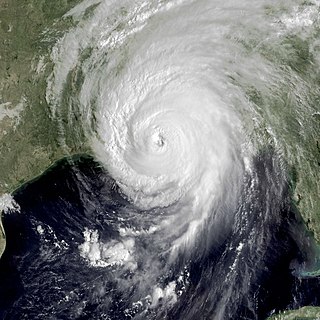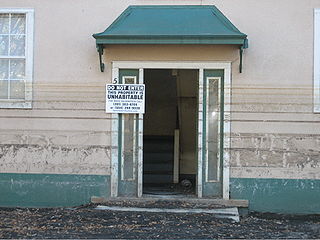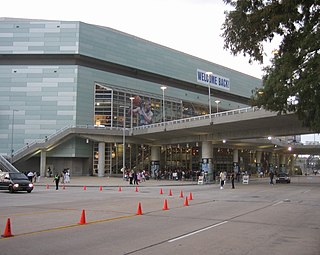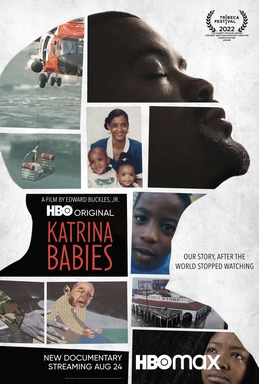Synopsis
Walking on Dead Fish tells the story of the East St. John Wildcats, a small-town high school football team that looks within to brave the adversity delivered by Hurricane Katrina.
Located just 15 miles (24 km) west of New Orleans, the tiny town of LaPlace, Louisiana escaped the cruel flooding of its neighbor only to suffer a different kind of flood, the overnight influx of 20,000 displaced hurricane victims. Its under-funded high school, East St. John High School, took in 450 displaced students and 20 of them joined the football team. With their first two games already cancelled, the Wildcats and their 20 new teammates, some from rival schools, take the field against rival Hahnville despite being short on equipment and practice time and wearing both home and away jerseys.
This group of teenage boys, blown together by the winds of Katrina, decide to make the best of their situation overcome the tragedy of losing their homes and schools. Despite vastly different social, economic, and racial backgrounds, they unite to overcome the tragedy that they all have in common, and quickly begin winning games.
The films explores the recovery from the worst natural disaster in our country's history through the eyes of a group of 16-year-old boys forced to quickly become men. In doing so, they unite a devastated school and lift the spirit of a broken community. More than football and more than Katrina, Walking on Dead Fish is a testament to the will of young men who put “we” before “me”.

The Pete Maravich Assembly Center is a 13,215-seat multi-purpose arena in Baton Rouge, Louisiana. The arena opened in 1972. It was originally known as the LSU Assembly Center, but was renamed in honor of Pete Maravich, a Tiger basketball legend, shortly after his death in 1988. Louisiana governor Buddy Roemer signed an act to rename the building in Maravich's honor. Maravich never played in the arena as a collegian but played in it as a member of the Atlanta Hawks in a preseason game. But his exploits while at LSU led the university to build a larger home for the basketball team, which languished for decades in the shadow of the school's football program. The Maravich Center is known to locals as "The PMAC" or "Pete's Palace", or by its more nationally known nickname, "The Deaf Dome", coined by Dale Brown. The Maravich Center's neighbor, Tiger Stadium is known as "Death Valley".
Hurricane season may refer to:

The Ninth Ward or 9th Ward is a distinctive region of New Orleans, Louisiana, which is located in the easternmost downriver portion of the city. It is geographically the largest of the 17 Wards of New Orleans. On the south, the Ninth Ward is bounded by the Mississippi River. On the western or "upriver" side, the Ninth Ward is bounded by Franklin Avenue, then Almonaster Avenue, then People's Avenue. From the north end of People's Avenue the boundary continues on a straight line north to Lake Pontchartrain; this line is the boundary between the Ninth and the city's Eighth Ward. The Lake forms the north and northeastern end of the ward. St. Bernard Parish is the boundary to the southeast, Lake Borgne farther southeast and east, and the end of Orleans Parish to the east at the Rigolets.

Hurricane Katrina was a devastating tropical cyclone that caused 1,392 fatalities and damages estimated at $186.3 billion in late August 2005, particularly in the city of New Orleans and its surrounding area. Katrina was the twelfth tropical cyclone, the fifth hurricane, and the third major hurricane of the 2005 Atlantic hurricane season. It was also the fourth-most intense Atlantic hurricane to make landfall in the contiguous United States, gauged by barometric pressure.

As the center of Hurricane Katrina passed southeast of New Orleans on August 29, 2005, winds downtown were in the Category 1 range with frequent intense gusts. The storm surge caused approximately 23 breaches in the drainage canal and navigational canal levees and flood walls. As mandated in the Flood Control Act of 1965, responsibility for the design and construction of the city’s levees belongs to the United States Army Corps of Engineers and responsibility for their maintenance belongs to the Orleans Levee District. The failures of levees and flood walls during Katrina are considered by experts to be the worst engineering disaster in the history of the United States. By August 31, 2005, 80% of New Orleans was flooded, with some parts under 15 feet (4.6 m) of water. The famous French Quarter and Garden District escaped flooding because those areas are above sea level. The major breaches included the 17th Street Canal levee, the Industrial Canal levee, and the London Avenue Canal flood wall. These breaches caused the majority of the flooding, according to a June 2007 report by the American Society of Civil Engineers. The flood disaster halted oil production and refining which increased oil prices worldwide.

The disaster recovery response to Hurricane Katrina in late 2005 included U.S. federal government agencies such as the Federal Emergency Management Agency (FEMA), the United States Coast Guard (USCG), state and local-level agencies, federal and National Guard soldiers, non-governmental organizations, charities, and private individuals. Tens of thousands of volunteers and troops responded or were deployed to the disaster; most in the affected area but also throughout the U.S. at shelters set up in at least 19 states.
Hurricane Katrina had many social effects, due the significant loss and disruption of lives it caused. The number of fatalities, direct and indirect, related to Katrina is 1,833 and over 400,000 people were left homeless. The hurricane left hundreds of thousands of people without access to their homes or jobs, it separated people from relatives, and caused both physical and mental distress on those who suffered through the storm and its aftermath, such as Post-traumatic stress disorder (PTSD).

The reconstruction of New Orleans refers to the rebuilding process endured by the city of New Orleans after Hurricane Katrina destroyed much of the city on August 29, 2005. The storm caused levees to fail, releasing tens of billions of gallons of water. The levee failure contributed to extensive flooding in the New Orleans area and surrounding parishes. About 80% of all structures in Orleans Parish sustained water damage. Over 204,000 homes were damaged or destroyed, and more than 800,000 citizens displaced—the greatest displacement in the United States since the Dust Bowl of the 1930s. Wind damage was less severe than predicted. The damage that took place that needed to be repaired cost about $125 billion.

Hurricane Rita was the most intense tropical cyclone on record in the Gulf of Mexico and the fourth-most intense Atlantic hurricane ever recorded. Part of the record-breaking 2005 Atlantic hurricane season, which included three of the top ten most intense Atlantic hurricanes in terms of barometric pressure ever recorded, Rita was the seventeenth named storm, tenth hurricane, and fifth major hurricane of the 2005 season. It was also the earliest-forming 17th named storm in the Atlantic until Tropical Storm Rene in 2020. Rita formed near The Bahamas from a tropical wave on September 18, 2005 that originally developed off the coast of West Africa. It moved westward, and after passing through the Florida Straits, Rita entered an environment of abnormally warm waters. Moving west-northwest, it rapidly intensified to reach peak winds of 180 mph (285 km/h), achieving Category 5 status on September 21. However, it weakened to a Category 3 hurricane before making landfall in Johnson's Bayou, Louisiana, between Sabine Pass, Texas and Holly Beach, Louisiana, with winds of 115 mph (185 km/h). Rapidly weakening over land, Rita degenerated into a large low-pressure area over the lower Mississippi Valley by September 26.

Holy Cross School is a Catholic school serving grades pre-K through 12 in New Orleans, Louisiana. It was founded in 1849 by the Congregation of Holy Cross. Holy Cross School was originally named St. Isidore's College and was a boarding and day school. Holy Cross School is located in the Archdiocese of New Orleans.

When the Levees Broke: A Requiem in Four Acts is a 2006 documentary film directed by Spike Lee about the devastation of New Orleans, Louisiana following the failure of the levees during Hurricane Katrina. It was filmed in late August and early September 2005, and premiered at the New Orleans Arena on August 16, 2006 and was first aired on HBO the following week. The television premiere aired in two parts on August 21 and 22, 2006 on HBO. It has been described by Sheila Nevins, chief of HBO's documentary unit, as "one of the most important films HBO has ever made." The title is a reference to the blues tune "When the Levee Breaks" by Kansas Joe McCoy and Memphis Minnie about the Great Mississippi Flood of 1927.

St. Augustine High School is a private, Catholic, all-boys high school run by the Josephites in New Orleans, Louisiana. It was founded in 1951 and includes grades 8 through 12.

People from the Gulf States region in the southern United States, most notably New Orleans, Louisiana, were forced to leave their homes because of the devastation brought on by Hurricane Katrina in 2005 and were unable to return because of a multitude of factors, and are collectively known as the Gulf Coast diaspora and by standard definition considered internally displaced persons. At their peak, hurricane evacuee shelters housed 273,000 people and, later, FEMA trailers housed at least 114,000 households. Even a decade after Hurricane Katrina, many victims who were forced to relocate were still unable to return home.

As a result of Hurricane Katrina and its effects on New Orleans, Tulane University was closed for the second time in its history—the first being during the American Civil War. The university closed for four months during Katrina, as compared to four years during the Civil War.

Benjamin Franklin High School is a charter high school and a magnet high school in New Orleans, Louisiana. Commonly nicknamed "Franklin" or "Ben Franklin", the school was founded in 1957 as a school for gifted children. Ben Franklin is consistently named the No.1 school in the state of Louisiana and has been ranked by U.S. News & World Report as No. 15 charter school in the nation. In 1990, it moved to its current location on the campus of the University of New Orleans (UNO) in the Lake Terrace/Lake Oaks neighborhood of Orleans Parish, near Lake Pontchartrain. The school was damaged by several feet of flood water due to Hurricane Katrina in the fall of 2005, and efforts to reopen the school were covered by nationwide news agencies. The school is part of the Orleans Parish School Board (OPSB), yet it operates as a charter school and is not administered directly by the agency.
Franklin Martin was an American documentary film director, producer, screenwriter and actor best known for his sport documentaries Walking on Dead Fish in (2008) and Long Shot: The Kevin Laue Story in 2012. He founded and ran the production company Dutchmen Films based in Los Angeles. He died of glioblastoma in New York on December 1, 2018.

Gleason is an American documentary film which premiered at the 2016 Sundance Film Festival. It covers five years in the life of the former New Orleans Saints football defensive back Steve Gleason, who has Amyotrophic lateral sclerosis (ALS), sometimes known as Lou Gehrig's disease, a rare incurable neurodegenerative condition associated with the former New York Yankees baseball star Lou Gehrig, who died from the disease in 1941.

Make It Funky! is a 2005 American documentary film directed, written and co-produced by Michael Murphy. Subtitled in the original version as "It all began in New Orleans", the film presents a history of New Orleans music and its influence on rhythm and blues, rock and roll, funk and jazz. The film was scheduled for theatrical release in September 2005, but was pulled by distributor Sony Pictures Releasing so that they did not appear to take commercial advantage of the devastation caused by Hurricane Katrina.

Katrina Babies is a 2022 documentary film, directed by Edward Buckles Jr. It explores the narratives of kids who experienced Hurricane Katrina and the impact of the storm’s aftermath on New Orleans youth. It premiered at the Tribeca Festival on June 14, 2022 and was released on HBO Max on August 24, 2022.














